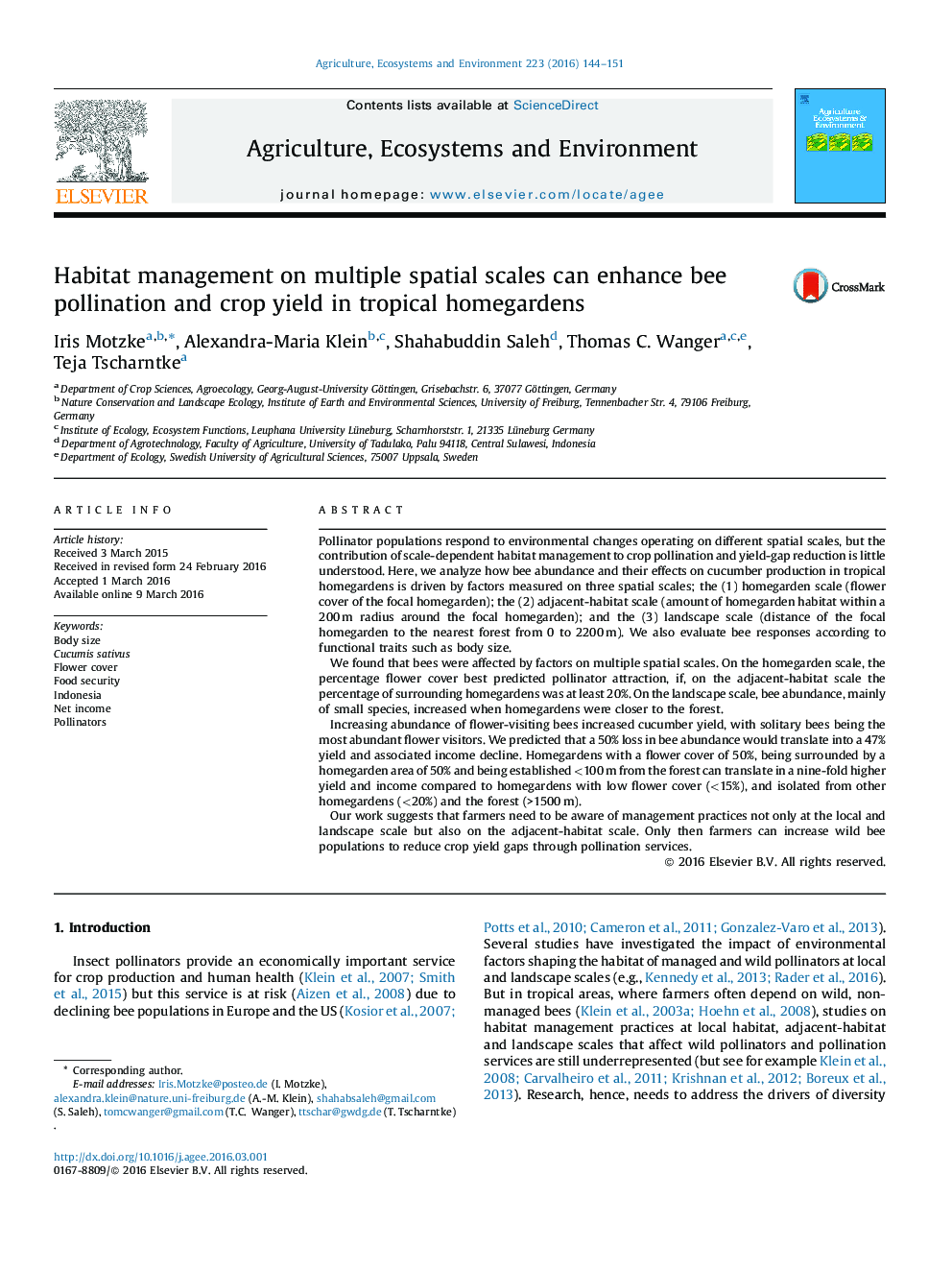| کد مقاله | کد نشریه | سال انتشار | مقاله انگلیسی | نسخه تمام متن |
|---|---|---|---|---|
| 2413493 | 1552029 | 2016 | 8 صفحه PDF | دانلود رایگان |
• We tested how flower cover, adjacent homegardens and forest distance influenced bees and yields.
• Cucumber yield increased significantly with increasing bee abundance.
• Bees were affected on multiple spatial scales.
• Bees were most abundant with 50% flower cover and surrounded by 50% homegardens.
• Distance to forest influenced mostly small bees.
Pollinator populations respond to environmental changes operating on different spatial scales, but the contribution of scale-dependent habitat management to crop pollination and yield-gap reduction is little understood. Here, we analyze how bee abundance and their effects on cucumber production in tropical homegardens is driven by factors measured on three spatial scales; the (1) homegarden scale (flower cover of the focal homegarden); the (2) adjacent-habitat scale (amount of homegarden habitat within a 200 m radius around the focal homegarden); and the (3) landscape scale (distance of the focal homegarden to the nearest forest from 0 to 2200 m). We also evaluate bee responses according to functional traits such as body size.We found that bees were affected by factors on multiple spatial scales. On the homegarden scale, the percentage flower cover best predicted pollinator attraction, if, on the adjacent-habitat scale the percentage of surrounding homegardens was at least 20%. On the landscape scale, bee abundance, mainly of small species, increased when homegardens were closer to the forest.Increasing abundance of flower-visiting bees increased cucumber yield, with solitary bees being the most abundant flower visitors. We predicted that a 50% loss in bee abundance would translate into a 47% yield and associated income decline. Homegardens with a flower cover of 50%, being surrounded by a homegarden area of 50% and being established <100 m from the forest can translate in a nine-fold higher yield and income compared to homegardens with low flower cover (<15%), and isolated from other homegardens (<20%) and the forest (>1500 m).Our work suggests that farmers need to be aware of management practices not only at the local and landscape scale but also on the adjacent-habitat scale. Only then farmers can increase wild bee populations to reduce crop yield gaps through pollination services.
Journal: Agriculture, Ecosystems & Environment - Volume 223, 1 May 2016, Pages 144–151
